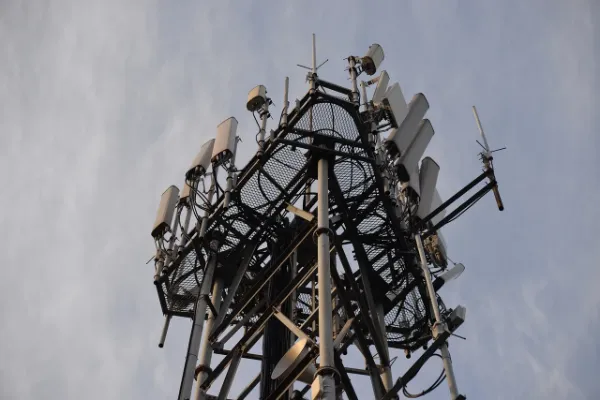With the advent of the 5G era, for stable signal transmission and wider coverage, the construction of 5G base stations, as the "first march" for 5G large-scale networking, is crucial.
So, how are base stations built in the 5G era? Let me introduce it to you below.
As of the end of 2022, the total number of mobile communication base stations in my country reached 10.72 million, a net increase of 754,000 from the end of the previous year. Among them, the total number of 5G base stations reached 2.22 million, a net increase of 795,000 from the end of the previous year, accounting for 20.7% of the total number of mobile base stations, and an increase of 6.4 percentage points from the end of the previous year. In addition, the number of mobile phone users has increased steadily, with 5G users accounting for more than 30%. As of the end of September, the total number of mobile phone users of the three basic telecommunications companies reached 1.682 billion. Among them, 5G mobile phone users reached 510 million, a net increase of 155 million from the end of the previous year, accounting for 30.3% of mobile phone users.
The fifth generation mobile communication technology (5G ) is a new generation of broadband mobile communication technology with the characteristics of high speed, low latency and large connection. 5G communication facilities are the network infrastructure that realizes the interconnection of humans, machines and things. In order to meet the needs of diversified application scenarios of 5G, the key performance indicators of 5G are more diversified. ITU has defined eight key performance indicators of 5G. Among them, high speed, low latency, and large connections have become the most prominent features of 5G. The user experience rate reaches 1Gbps, the latency is as low as 1ms, and the user connection capability reaches 1 million connections/square kilometer.
5G base station is the core equipment of 5G network, providing wireless coverage and realizing wireless signal transmission between wired communication network and wireless terminals. The architecture and form of the base station directly affect how the 5G network is deployed. Since the higher the frequency, the greater the attenuation during signal propagation, the density of base stations in the 5G network will be higher.

5G Base Station System Composition
A complete 5G base station system is composed of main equipment, power supporting equipment and facilities, towers, and computer rooms. The main equipment includes BBU (baseband processing unit) and AAU (active antenna processing unit). The supporting facilities include transmission, power supply, air conditioning, tower, antenna feeder, grounding system, etc.
Among them, the BBU (Base Band Unite) is the most core equipment in the base station. It is generally placed in a relatively hidden computer room and cannot be seen by ordinary residents. The BBU is responsible for processing the signaling and data of the core network and users. The most complex protocols and algorithms in mobile communications are implemented in the BBU. It can even be said that the base station is the BBU.

From the appearance point of view, the BBU looks very much like the main chassis of a desktop computer. In fact, the BBU is similar to a dedicated (not general-purpose like a computer host) server. The realization of its main functions relies on two types of key Board card: main control board and baseband board to achieve.

A BBU chassis, you can clearly see that there are 8 drawer-like slots in the BBU chassis, and the main control board and baseband board can be inserted into these slots. How many slots need to be inserted into a BBU chassis? The main control board and baseband board mainly depend on the capacity requirements of the base station. The more boards are inserted, the more capacity the base station has and the more users it can serve at the same time.
Tel: +86 158 9888 8891
Whatsapp: +86 158 9888 8891
Office: +86 532-55578185